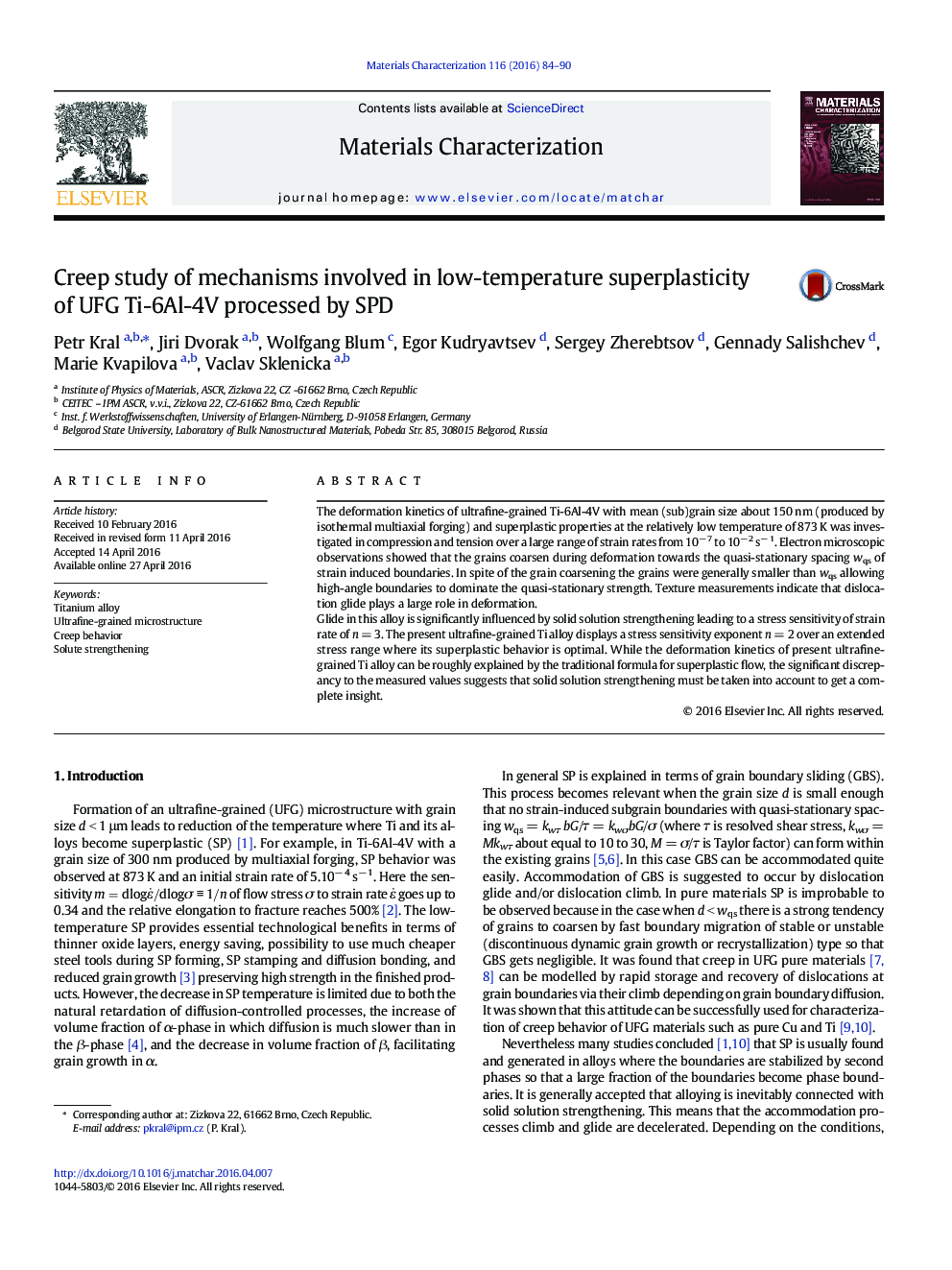| Article ID | Journal | Published Year | Pages | File Type |
|---|---|---|---|---|
| 1570727 | Materials Characterization | 2016 | 7 Pages |
•The UFG Ti-6Al-4V alloy behaves superplastically at low temperature of 873 K.•Grain coarsening at low stresses limits superplasticity of UFG Ti alloy.•Solute strengthening plays an important role in low-temperature superplasticity.•Acceleration of creep in UFG Ti alloy is caused by processes related to hab.
The deformation kinetics of ultrafine-grained Ti-6Al-4V with mean (sub)grain size about 150 nm (produced by isothermal multiaxial forging) and superplastic properties at the relatively low temperature of 873 K was investigated in compression and tension over a large range of strain rates from 10− 7 to 10− 2 s− 1. Electron microscopic observations showed that the grains coarsen during deformation towards the quasi-stationary spacing wqs of strain induced boundaries. In spite of the grain coarsening the grains were generally smaller than wqs allowing high-angle boundaries to dominate the quasi-stationary strength. Texture measurements indicate that dislocation glide plays a large role in deformation.Glide in this alloy is significantly influenced by solid solution strengthening leading to a stress sensitivity of strain rate of n = 3. The present ultrafine-grained Ti alloy displays a stress sensitivity exponent n = 2 over an extended stress range where its superplastic behavior is optimal. While the deformation kinetics of present ultrafine-grained Ti alloy can be roughly explained by the traditional formula for superplastic flow, the significant discrepancy to the measured values suggests that solid solution strengthening must be taken into account to get a complete insight.
